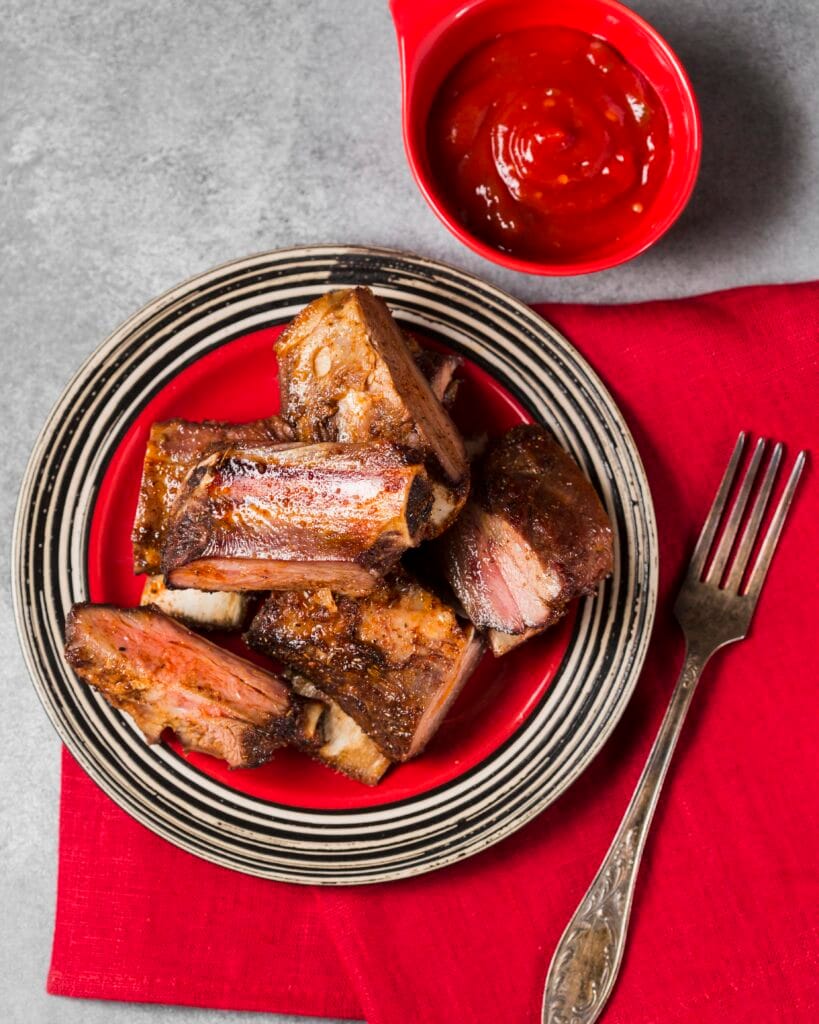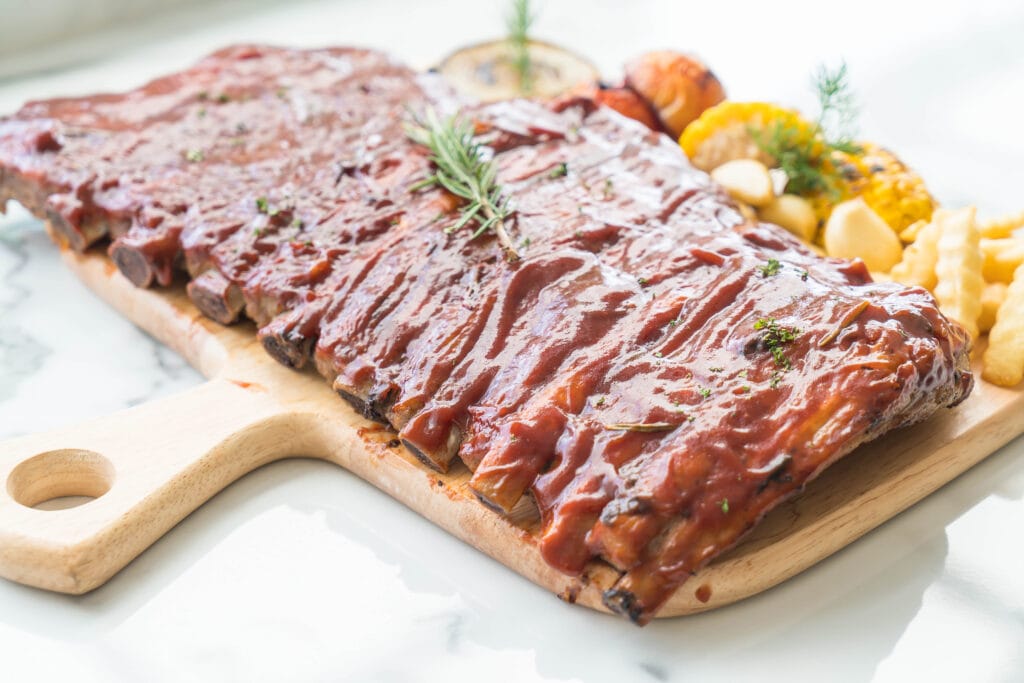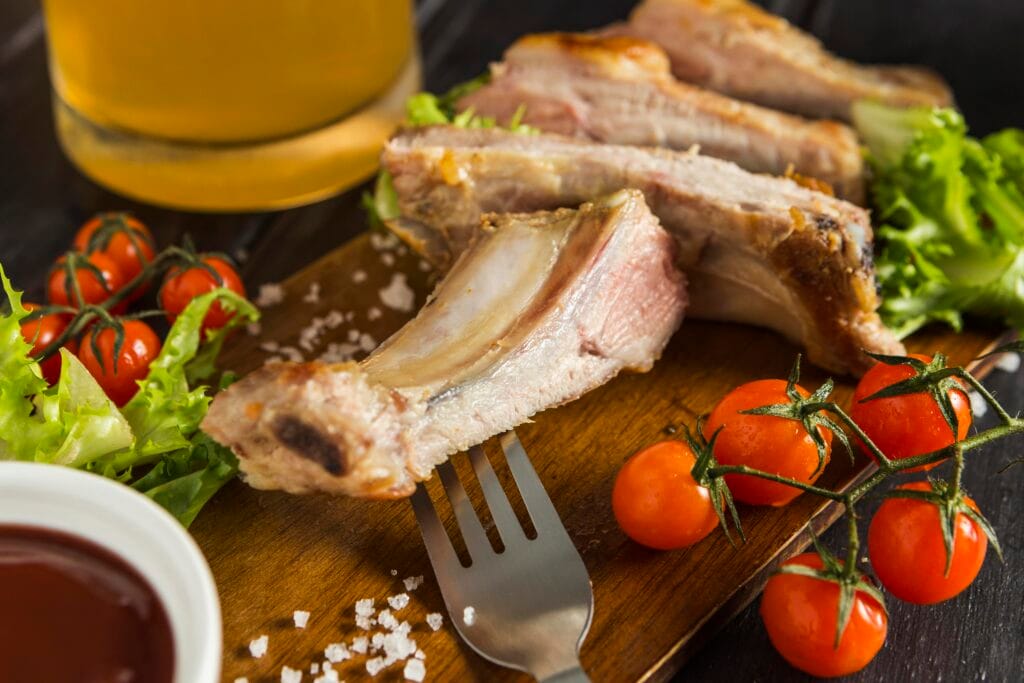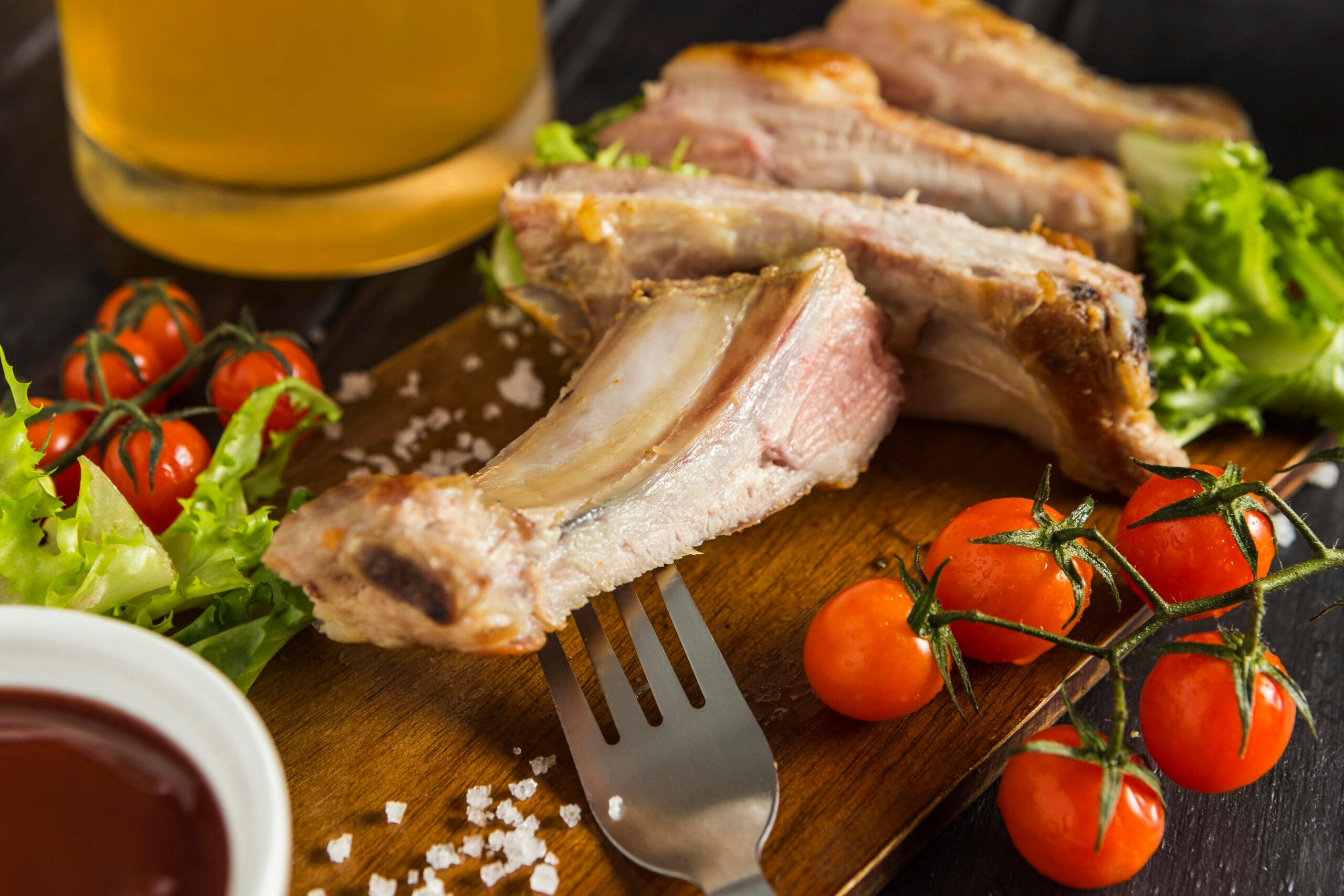Should Ribs Be Covered When Cooking? Expert Tips for Juicy, Fall-Off-the-Bone Perfection Every Time 🍖🔥
When it comes to cooking ribs, the question of whether to cover them during cooking sparks endless debates among pitmasters and home chefs. From locking in moisture to achieving caramelized crusts, the answer isn’t one-size-fits-all. In this world guide, we’ll break down the science, techniques, and proven strategies to help you master ribs—whether you’re using an oven, slow cooker, or grill.

Why Ribs Be Covered? The Science Behind Moisture & Tenderness
Covering ribs during cooking—often called the “Texas crutch”—traps steam, accelerates collagen breakdown, and prevents drying. Here’s why it matters:
- Collagen Conversion: Slow-cooking covered ribs at 225–275°F breaks down tough connective tissue into gelatin, yielding meltingly tender meat .
- Juice Retention: Foil or butcher paper acts as a barrier, reducing moisture loss by up to 30% compared to uncovered methods .
- Faster Cooking: Wrapping ribs halves cooking time (e.g., 2 hours covered vs. 4+ hours uncovered) .
Pro Tip: Use heavy-duty foil or pink butcher paper for optimal results. Foil locks in moisture, while paper allows slight airflow for bark development .
Step-by-Step: How to Perfectly Ribs Be Covered in 3 Methods
1. Oven-Baked Ribs (Foil-Wrapped) 🍴
Ingredients:
- 2.5 lbs baby back ribs
- Dry rub (brown sugar, smoked paprika, garlic powder, cayenne)
- ¼ cup apple cider vinegar (for steam)
Instructions:
- Prep: Remove membrane, apply rub, and wrap tightly in foil with vinegar .
- Cook: Bake at 300°F for 2 hours.
- Finish: Uncover, brush with BBQ sauce, and broil 2–3 minutes for caramelization .
Why It Works: Foil creates a steamy microenvironment, ensuring fall-off-the-bone texture without drying .
2. Slow Cooker Ribs (Low & Slow) ⏲️
Ingredients:
- 4 lbs beef back ribs
- Spice rub (smoked salt, cumin, thyme)
- ½ cup water or beer
Instructions:
- Layer: Place ribs in slow cooker with liquid.
- Cook: Cover and simmer on LOW for 6 hours .
- Crisp: Transfer to oven under broiler for 2 minutes .
Tip: Avoid overcrowding—space ribs evenly for consistent tenderness .
3. Smoked Ribs (Butcher Paper Technique) 🌲
Ingredients:
- Pork spare ribs
- Mustard binder + dry rub
- Hickory wood chips
Instructions:
- Smoke Uncovered: 3 hours at 225°F.
- Wrap: Enclose in butcher paper with butter or honey.
- Finish: Smoke 2 more hours until probe-tender .
Key Benefit: Butcher paper balances moisture retention and bark formation, ideal for competition-style ribs .
5 Critical Factors to Consider Ribs Be Covered
- Meat Type:
- Beef Ribs: Require longer cooking (6+ hours) due to thicker marbling.
- Pork Ribs: Optimal at 2–3 hours covered.
- Liquid Choices:
- Apple cider vinegar, beer, or broth enhance flavor and steam.
- Timing:
- Wrap after 2 hours of smoking/uncovered cooking for balanced texture.
- Temperature:
- Aim for 195–203°F internal temp for collagen breakdown.
- Sauce Application:
- Apply sauce after uncovering to prevent burning.
Why Should Ribs Be Covered in Liquid in a Slow Cooker?
1. The Role of Liquid in Slow Cooking
Liquid in a slow cooker prevents ribs from drying out and helps break down collagen and connective tissues. This is especially important for leaner cuts like baby back ribs.
Adding liquid can also intensify flavor by allowing the ribs to absorb aromatic liquids like broth, beer, or BBQ sauce. As seen in slow cooker chili benefits, minimal liquid can improve both texture and taste.
2. Do Ribs Cook Better with Liquid?
Ribs naturally release their own juices during cooking, meaning they don’t always need extra liquid. However, adding a small amount of flavorful liquid, like apple cider vinegar or stock, can enhance tenderness and taste.
When Should Ribs Be Covered in Liquid in a Slow Cooker?
1. Lean or Tougher Ribs
Lean ribs like baby back ribs or tougher cuts such as country-style ribs benefit from the added moisture of liquids. Without it, they may dry out during long cooking sessions.
Best liquids for lean ribs:
- Chicken or beef broth
- Beer or cider
- Thinned BBQ sauce
2. Flavor Boosts with Liquids
Liquids like beer, soda, or vinegar can introduce unique flavors while tenderizing the meat. For example:
- Beer adds subtle malty undertones.
- Soda like cola enhances sweetness and complements smoky seasonings.
- Apple cider vinegar adds tang and tenderizes connective tissues.

Should Ribs Be Cooked Without Liquid?
1. Cooking Ribs in Their Own Juices
Ribs are rich in fat and connective tissue, which release moisture as they cook. Cooking without additional liquid allows these natural juices to flavor the meat.
How to cook ribs without liquid:
- Use a flavorful dry rub for seasoning.
- Elevate ribs on a rack or vegetables to prevent them from sitting in rendered fat.
2. Avoiding Diluted Flavors
Excess liquid can dilute seasonings and reduce the intensity of sauces. If bold, concentrated flavors are your goal, skip the liquid and finish the ribs in the oven for a caramelized crust.
How Much Liquid Should Cover Ribs in a Slow Cooker?
Using too much or too little liquid can affect the outcome of your ribs. Here’s how to find the right balance:
- Add 1/4 to 1/2 cup of liquid for leaner cuts or when cooking for extended periods.
- Ensure the ribs are not submerged. Covering the bottom of the slow cooker is sufficient.
FAQs: Answering Top “Ribs Be Covered” Questions
Q: Can I skip covering ribs?
A: Yes, but expect longer cook times (4–6 hours) and drier meat. Ideal for crispy bark lovers.
Q: Foil vs. butcher paper—which is better?
A: Foil maximizes juiciness; paper offers better bark. Experiment with hybrid methods!
Q: How do I prevent soggy ribs?
A: Uncover during the final 15–30 minutes to crisp the exterior.
Q: Can I reuse foil/paper?
A: Not recommended—drippings can harbor bacteria.
Q: Do I need to remove the membrane?
A: Optional. Leaving it on keeps ribs intact; removing it improves rub penetration .
FAQs: “Ribs Be Covered”
1. Do ribs always need liquid in a slow cooker?
No, ribs can cook in their own juices. Liquid is optional but can help tenderize and enhance flavors.
2. What’s the best liquid to cover ribs in?
Broth, beer, cider, or a BBQ sauce mixture are excellent options.
3. Should ribs be completely submerged in liquid?
No, ribs should not be submerged. A small amount of liquid at the bottom is usually enough.
4. How do I make tender ribs without liquid?
Use a dry rub, elevate the ribs, and rely on their natural juices. Finish in the oven for a caramelized crust
Advanced Tips from Award-Winning Pitmasters
- Spritzing: Mist ribs with apple juice every 45 minutes when uncovered.
- Resting: Let ribs rest 10–15 minutes after cooking to redistribute juices.
- Layering Flavors: Add a pat of butter or honey inside the foil/paper wrap for richness.
- Ribs Be Covered
Conclusion: Ribs Be Covered
Covering ribs isn’t just a technique—it’s a culinary cheat code for guaranteed tenderness. Whether you’re a weekend griller or a BBQ competitor, mastering the wrap ensures juicy, flavorful results every time. Ready to experiment? Fire up your oven, slow cooker, or smoker, and let those ribs shine!
Pro Finale: Tag us with your #CoveredRibsMasterpiece—we’ll feature the most creative twists!
Internal Links (Rich Anchor Text)
- “Pair your ribs with Creamy Coleslaw for the ultimate BBQ plate.”
- “Explore Global Spice Blends to elevate your rib rubs.”
- “Master Smoking Techniques for competition-worthy bark.”
External Links
- Dive into wood selection tips via AmazingRibs.com.
- Learn about collagen science from Serious Eats.
- Ribs Be Covered

.
Final Thoughts: Should Ribs Be Covered in Liquid in a Slow Cooker?
The answer to should ribs be covered in liquid in a slow cooker depends on your desired results. Adding a small amount of liquid can enhance tenderness and flavor, especially for leaner cuts. On the other hand, cooking without liquid highlights the ribs’ natural flavors and prevents dilution.
Experiment with both techniques to discover what works best for you. Whether you add liquid or not, slow cooking ensures tender, delicious ribs every time!

